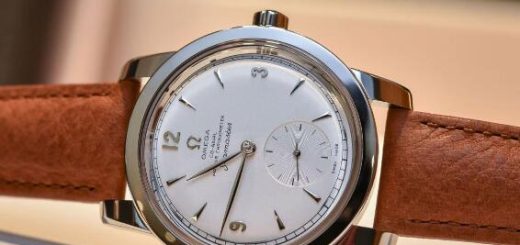The Movement Development Stages of Omega
Omega, a brand favored by many, stands out as one of the Swiss names extensively replicated by Chinese watch factories. The evolution of movements in replica Omega watches has traversed multiple phases within our industry. Presently, the clone Omega 8XXX series movement from the VS factory has achieved remarkable accuracy. Let’s delve into the history of these movements.
In the initial stage, the Sea-gull movement took center stage.
Before 2011, during this period, watch factories primarily focused on replicating cases that closely resembled the originals. The movements employed were basic, typically featuring Sea-Gull automatic movements without embellishments. Some lacked Omega logos, making it easy to identify replicas, particularly those with transparent crystal backs. The photo below illustrates this stage.
The second phase introduced the use of the Citizen 8215 movement, complemented by faux movement plates.
Commencing in 2012, certain factories adopted movements inspired by Citizen 8215, enhancing their appearance with decorative plates. Whether for the Planet Ocean or other Omega replica watches, this marked a significant advancement during that period. Take a look below—doesn’t the movement appear more refined?
Nonetheless, this movement exhibited certain drawbacks. When the watch is shaken, the seconds hand comes to a halt, and it resumes movement only when adjusting the time. Additionally, the jewels are affixed to the movement plates with glue, posing a risk of detachment and potential damage to the movement itself.
In the third phase, which emerged around 2018, some manufacturers introduced an aesthetically pleasing movement based on either the Hangzhou 6770 or the Asia 2836, accompanied by simulated movement plates. This represented a notable improvement over the issues associated with the Citizen 8215. However, despite its visual appeal, the functionality still differs from the original. Notably, the hour hand cannot be independently adjusted, and the balance wheel lacks the original’s black color, featuring a smaller size.
Advancing to the fourth stage, the VS factory introduced the In-house 8500 movement, uniquely developed without reliance on any Asia movement. Every screw and jewel within this movement serves a distinct purpose, and the jewels are no longer made of plastic. Notably, the functions of this movement mirror those of the genuine Omega counterpart, and the position and size of the balance wheel are accurately replicated.
While I cannot predict if the VS factory will introduce more sophisticated movements in the future, it is anticipated that their in-house 8500 movement will be featured in their replica Omega watches for the next several years. Meanwhile, the movement from the third stage continues to be employed by many smaller factories in the market. It is crucial to stay vigilant and discerning to avoid acquiring low-quality replicas.
On another note, I’ve received recent updates from the VS factory. The Seamaster No Time to Die has now been enhanced with authentic Titanium. Here are the accompanying photos of the watch.



Recent Comments